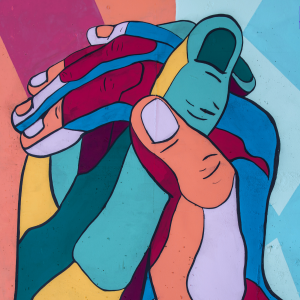Clickbait is taking over the world, and it’s not good news for media organisations. While respected news publications are still working out how to make profits online, social media sites are awash with clickbait, luring streams of traffic to their websites by piquing people’s curiosity, and making huge profits through advertising revenue.
Longstanding news publications continue to write in-depth pieces of journalism, but clickbait sites have a knack for taking these as inspiration and turning them into easy-to-digest, image-filled listicles, which garner tonnes of traffic through social media promotion.
And it works. Clickbait has spread like wildfire on social platforms, fuelled by shares and raking in page views. In terms of traffic, it’s a success.
Does this make clickbait good content?
If your judgement is based on the number of views, then yes, clickbait is top-notch content. If marked on factors like the calibre of content, in-depth research or objective portrayal of the story, then perhaps not.
For news publishers, the issue with clickbait seems to be more to do with traffic than content; they want a share in the pie too. For audiences, the main issue is the story doesn’t usually elicit as much excitement as the headline. In fact, some reports state that less than a quarter of people scroll down promoted content once they click on it. Whereas 71% scroll down regular editorial content.
Clickbait’s success lies largely in two things – the headline, and the platform it is promoted on. Facebook in particular is where clickbait really flourishes. The site’s promoted ads function has allowed websites to tap into audiences when they’re browsing their news feed, a window of opportunity that clickbait sites have jumped on. And as over 750 million users log on to Facebook daily, it’s a big one.
However, Facebook recently reviewed its algorithms with the intention of sniffing out clickbait; the social network has cracked down on content that it considers to be falsely luring people to click on it, which is surely a victory for brands that rely heavily on social media promotion, and also news publications whose content becomes fodder for viral sites.
With clickbait, there is often a discrepancy between what the headline promises and what the content delivers, but that doesn’t mean every catchy headline is clickbait.
Buzzfeed, famous for its viral social content, has been accused of click-baiting in the past, a claim the site denies. Its editor in chief, Ben Smith, explained why in a blog post he wrote late last year, saying the site is not “true clickbait”, because it doesn’t overpromise and under-deliver on content.
“If your goal — as is ours at BuzzFeed — is to deliver the reader something so new, funny, revelatory, or delightful that they feel compelled to share it, you have to do work that delivers on the headline’s promise, and more,” he said. “The best way to ensure your readers won’t choose to share a story or a post is to trick them.”
In a way it goes back to that famous line, “It does exactly what it says on the tin.” People expect to read a headline and have the following content deliver on that premise.
Clickbait also seems to have a short shelf life and within one minute of consuming it, audiences are likely to have moved on to the next luring headline, forgetting what they’ve just come across. In that sense, it’s unlikely to make an impact, inspire change or start a movement. Very good content, on the other hand, gets under people’s skin and can do any or all of the above mentioned things.
That is something clickbait will never do.
Earlier this year, an article about the king of clickbait was published on the New Yorker. It looked at Emerson Spartz’s success as a content aggregator entrepreneur who has developed a sort of science for generating successful clickbait, which is centred on a headline-testing algorithm that determines which attention-grabbing title will gain the most traffic to an article. (It’s a well written, long-form piece without pictures, might I add).
Looking at Spartz’s most successful site, Dose, much of the content is spawned from news articles. This content is then passed between aggregator sites, morphing into slightly different formats each time, until it becomes irresistible clickbait. Articles on Dose often end with a H/T (short for hat tip), which links to a source article. By following the source paths and citations in each preceding piece of content, you get an idea of how a story has evolved.
It begs the question, could brands and news publishers use a similar content path to draw more people into their story?
With so many publishing streams online, the competition for page views has never been harder. By re-evaluating how they distribute their content on social media, and how it is formatted, brands and publishers could nudge out (and eventually eradicate) clickbait.
To discover how you can get your content to reach your target audience, contact us.






